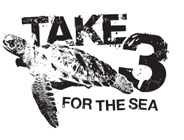Estuaries: The Surprising Plastic Traps and How Local Clean-Ups Can Help
When we think about plastic pollution, our minds often drift to images of vast oceanic garbage patches, like the Great Pacific Garbage Patch between California and Hawaii. It’s a stark image, ingrained in our collective consciousness since the 1970s when scientists first discovered these huge plastic gyres in the middle of the world’s oceans. Yet, despite these vivid mental pictures, there’s a crucial element missing from the narrative: where most plastic actually ends up.
Contrary to popular belief, research done almost a decade ago revealed that less than 10% of plastic entering rivers and coastlines makes it to the ocean. The mystery of where the rest of the plastic goes has baffled researchers ever since. But recent studies are now shedding light on this question, pointing to coastlines, estuaries, and shores as the most likely destinations.
A team of researchers at the University of Auckland, New Zealand decided to investigate the retention of plastic in estuaries, focusing on Auckland’s Waitematā Harbour. Using GPS-equipped floating plastic packets to simulate plastic waste, they tracked their movement over several tidal cycles. Their results were astonishing: nearly all the packets ended up on the shoreline, unable to traverse the relatively short distance to exit the estuary into the ocean.
 Waitematā Harbour
Waitematā Harbour
This experiment wasn’t a one-off. Computer simulations confirmed their findings, revealing that 60% to 90% of buoyant plastic was retained in the estuary over ten tidal cycles. It appears that estuarine currents, which pump material towards land during incoming tides and push it to the sides during outgoing tides, effectively trap the plastic,, finally discarding it along the shorelines.
This phenomenon isn’t unique to New Zealand. Studies in France, Germany, and Vietnam indicate similar patterns, with estuaries acting as plastic traps. These findings are pivotal, showing that shoreline clean-ups in estuaries and along coastlines are highly effective in preventing plastic from reaching the open ocean. As the study’s authors stated, “These results emphasise the role of local clean-ups as an extremely effective means of preventing future plastic pollution in the ocean.”
All over the world, efforts are underway to reduce plastic use and clean up the environment and an international treaty aimed at mitigating plastic pollution is expected by the end of 2024. However, cleaning up decades of accumulated plastic will require sustained effort well into the future. Take 3 for the Sea has been organising and promoting beach clean-ups for the last 15 years, and the Take 3 global movement of supporters has removed more than 50 million pieces of rubbish from the environment during this time. Scientific proof of the importance of this work, such as that provided by the team from the University of Auckland, is encouraging and we urge everyone who cares about the environment to unleash the power of 3 by doing the following:
- Take 3 pieces of rubbish with you when you leave the beach, waterway… or anywhere
- Take 3 actions to reduce your single-use plastic
- Take 3 people on the journey with you




